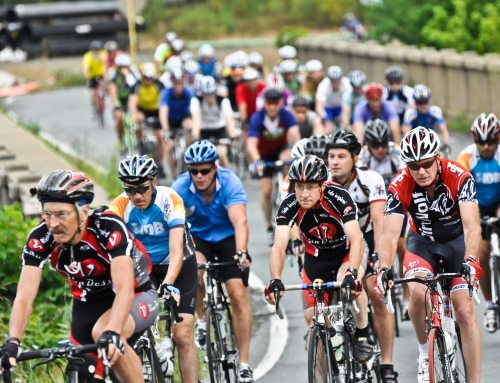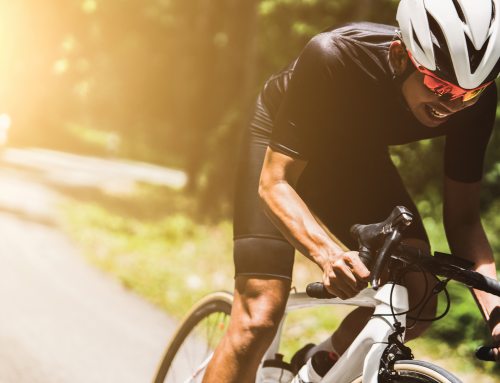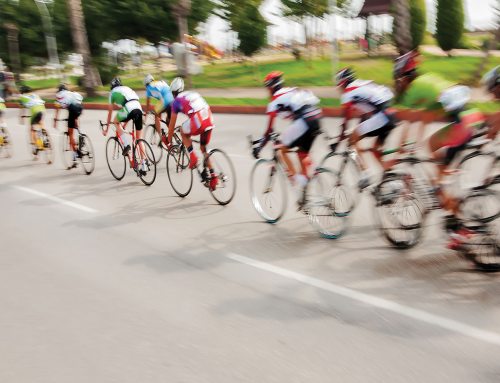By Brian Beatty
There is no doubt that aerodynamic positioning on the bike decreases wind resistance. Wind tunnel studies have well documented thousands of position and equipment modifications in the attempt to maximize efficiency. In terms of bike positioning, the general basic take away is the flatter one’s back, the better.
However, striving for a flat back aero position could end up sacrificing power output in ways that are more detrimental to performance than any gain achieved by decreased drag. The benefits of decreased drag increase as overall speed increases. In most conditions, an average speed of 22-23 mph is needed to begin reaping significant rewards. At professional time trial speeds, this can be a huge advantage, for recreational triathletes it may be of no consequence.
There are also significant biomechanical issues that impact power output as one tilts the pelvis further forward to achieve a flatter back. As the pelvis tilts forward, there is increased stretch on the gluteals and the hamstrings. If the amount of stretch is significant enough to approach the end ranges of gluteal and hamstring flexibility, it will decrease the force production that these large, important muscles can produce. This decreases efficiency and requires increased workload on the quadriceps and front of the knee. The power output in the top half of the pedal stroke is most impacted in this case.
Additionally, as the femur comes closer to the chest at the top of the pedal stoke, the hip flexor muscles are also required to work near their end range of motion in a much shortened position. This negatively impacts the ability to generate force pulling up through the back of the pedal stroke. For better or worse, this may have less impact on many cyclists, since few of us actually get the production in this part of the pedal stoke as we think we do.
The bottom line is, work on your aero position, but don’t sacrifice comfort. Once you have a position that feels good, or if you want to make significant changes, it can be extremely helpful to test your setup using a power output monitoring device to see if a position change really improves anything. You may find that working on your body and form are more effective than the latest aero setup adjustment or lighter parts.
# # #
Brian Beatty with Balanced Physical Therapy thinks that this whole aerodynamic cycling position issue just highlights how important it is to sit more upright and ride trails more often. However you can catch him in the drops on the road descending or sometimes just struggling before being popped off the back.






